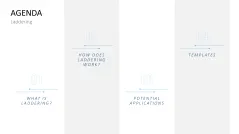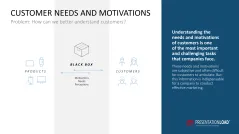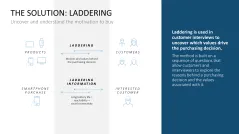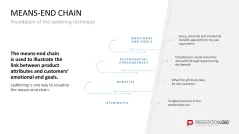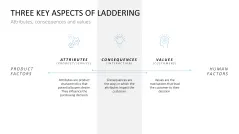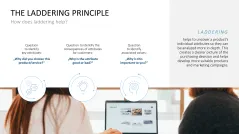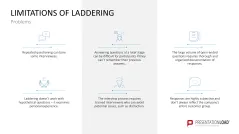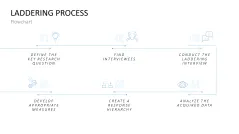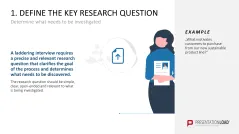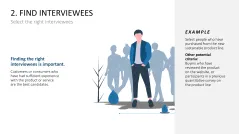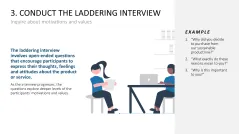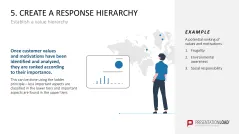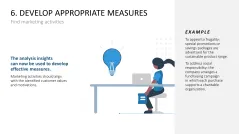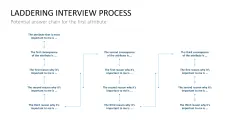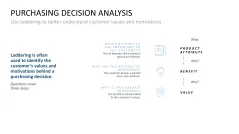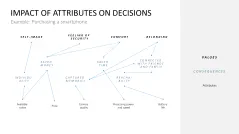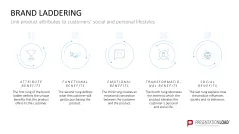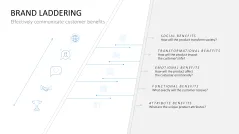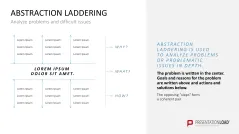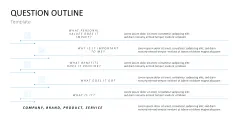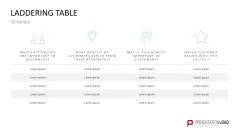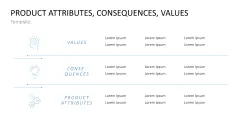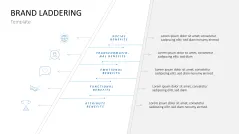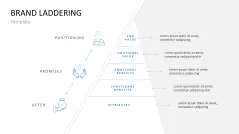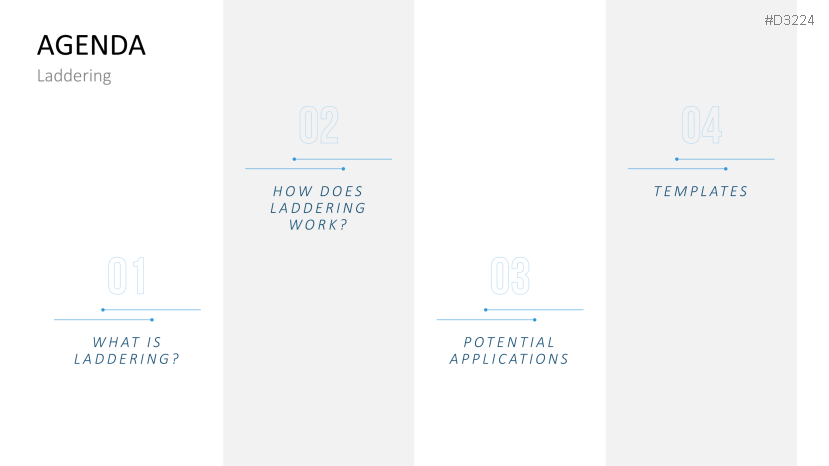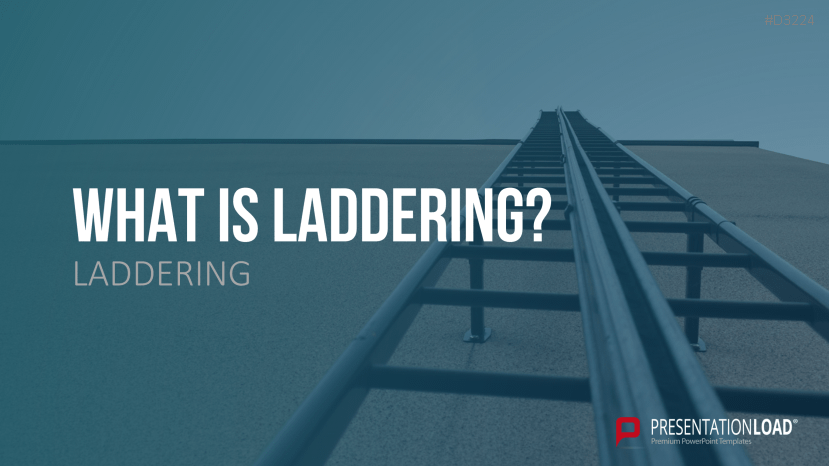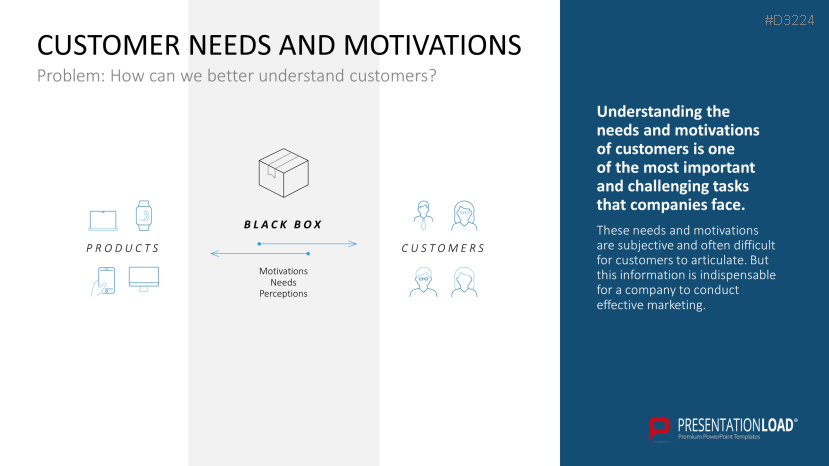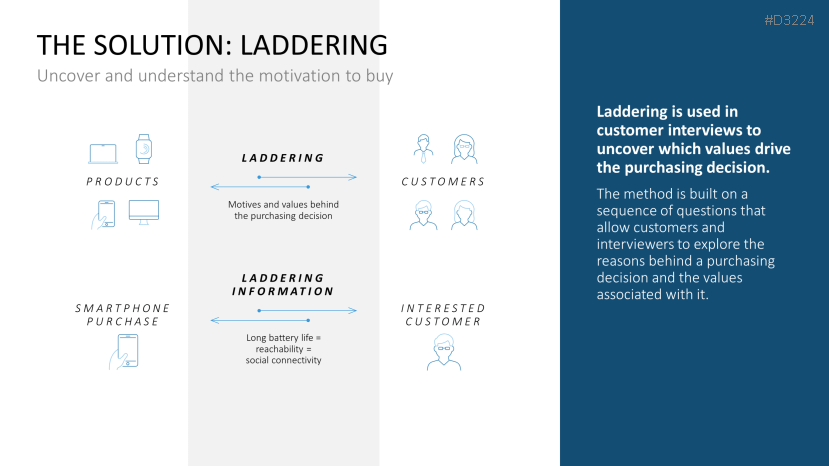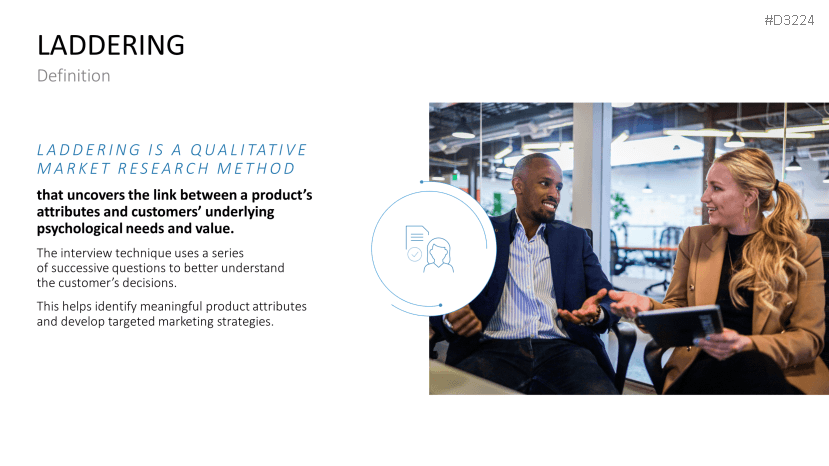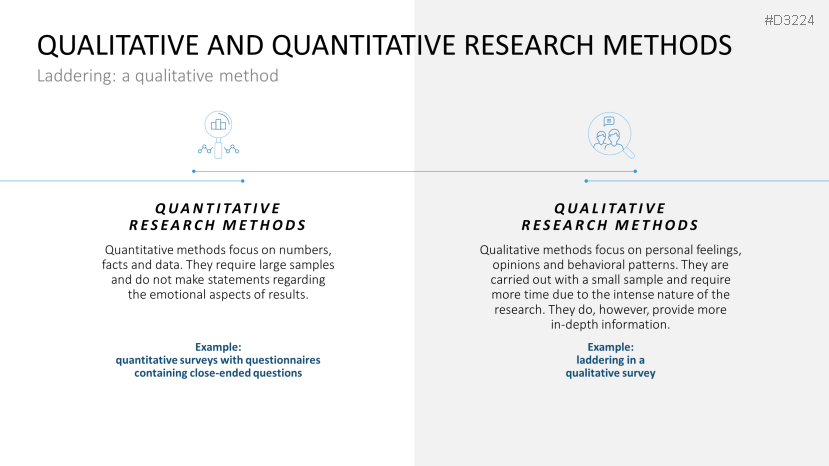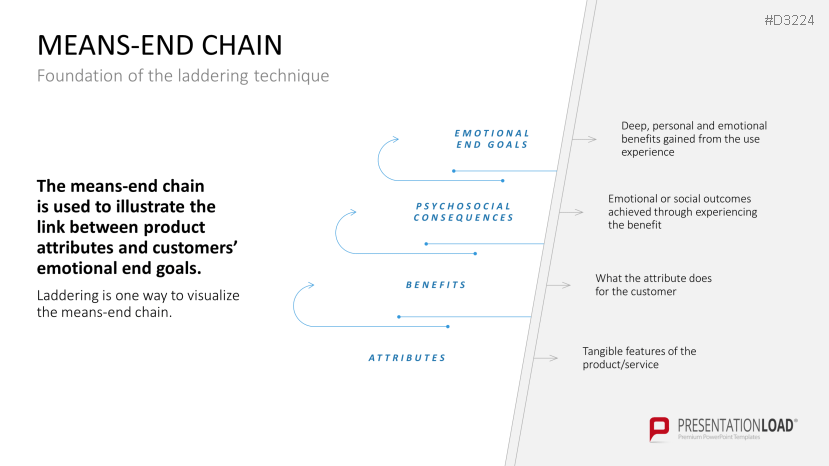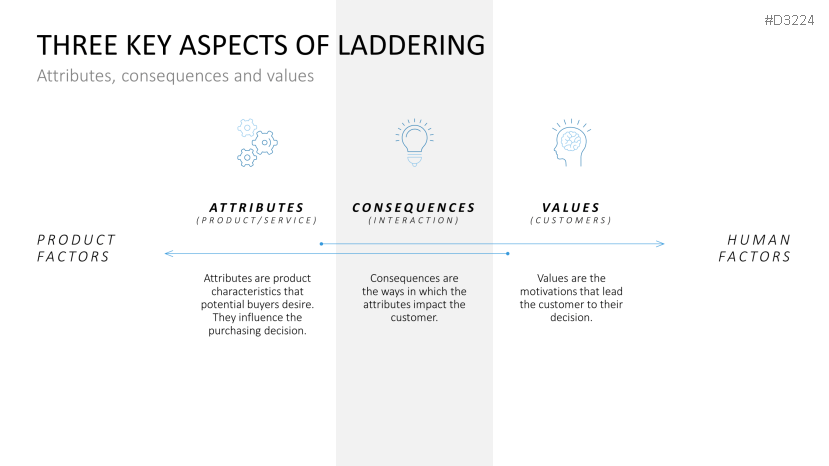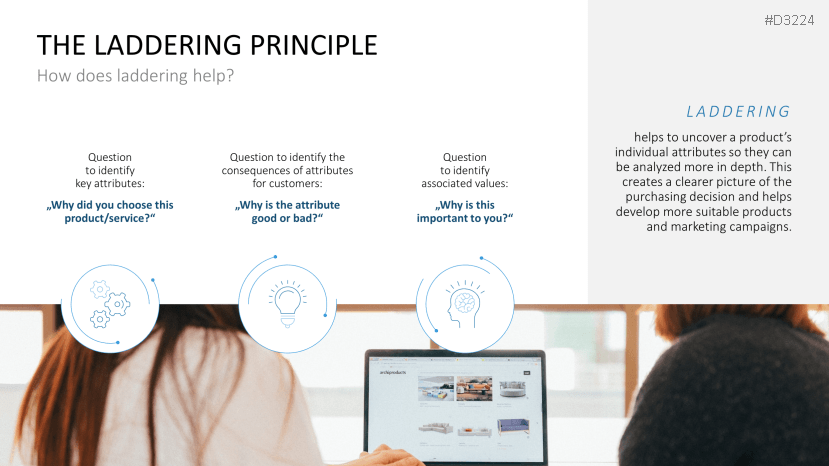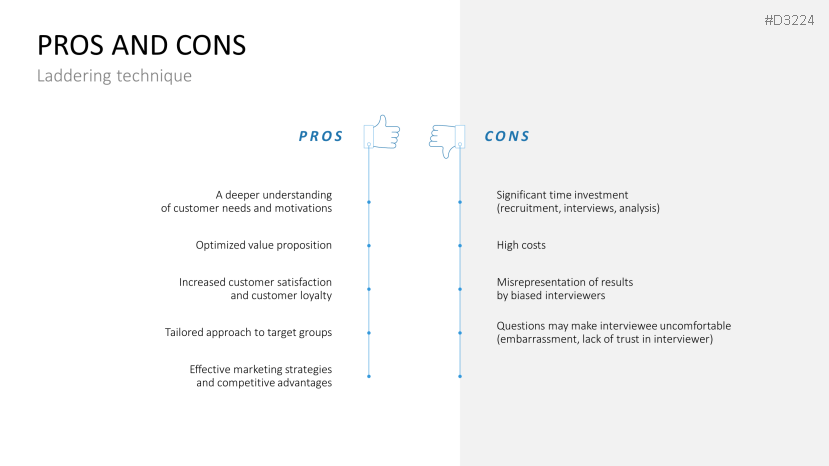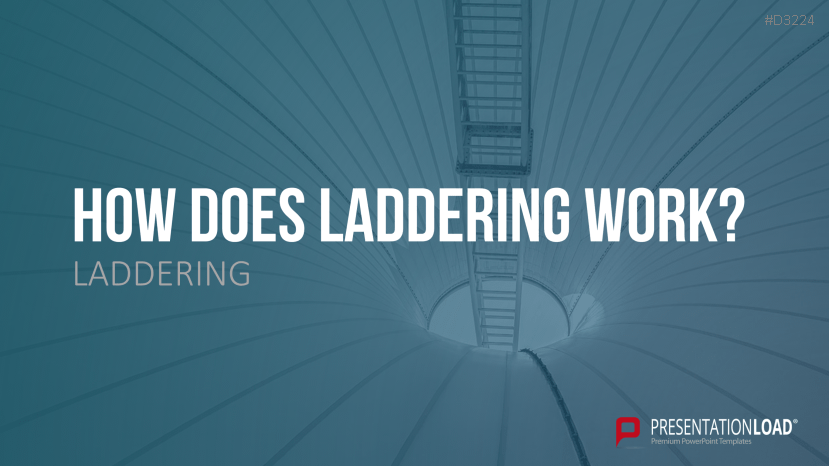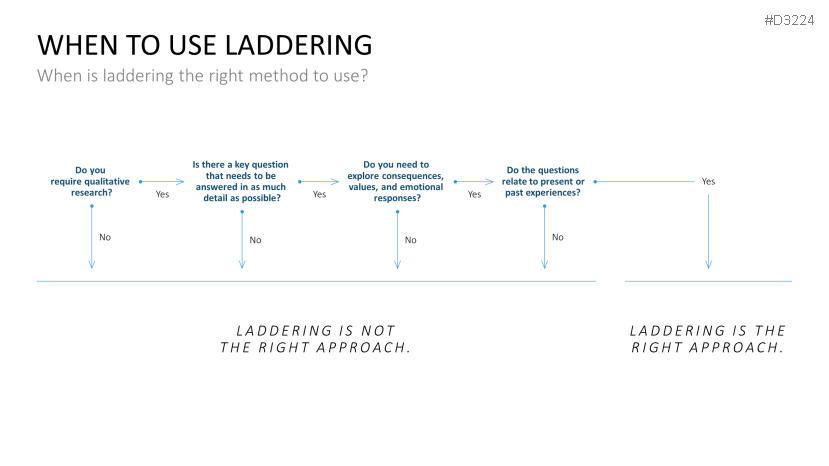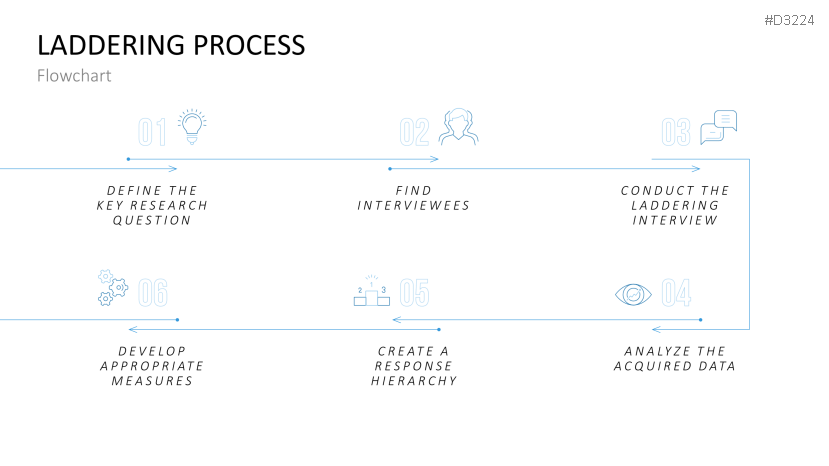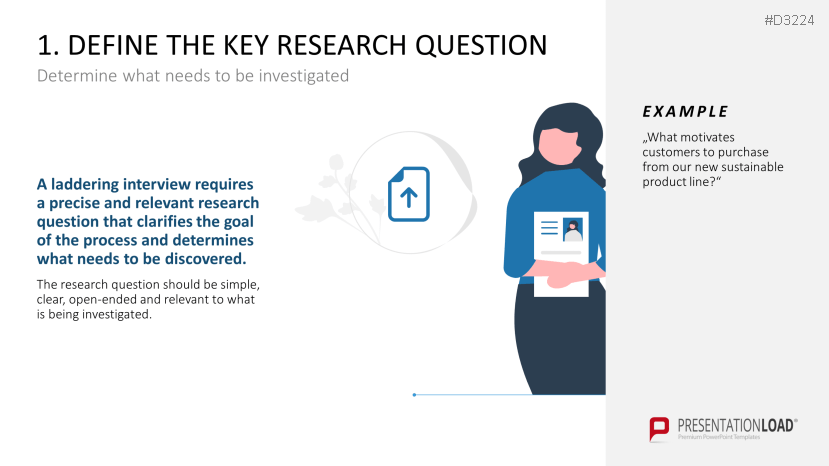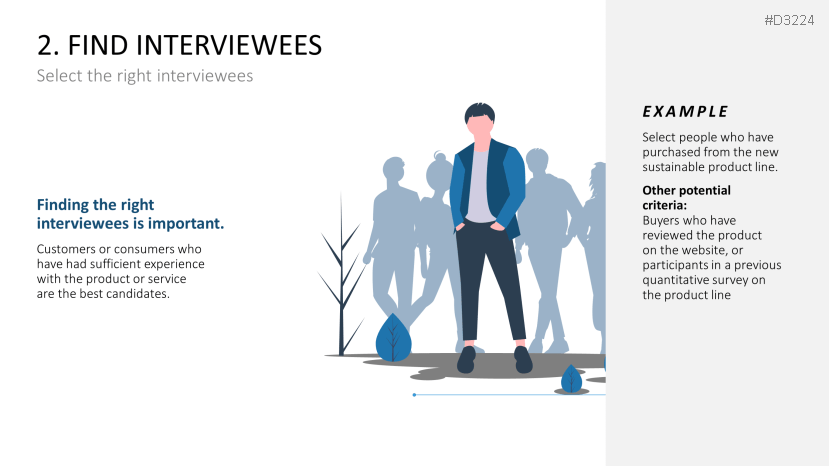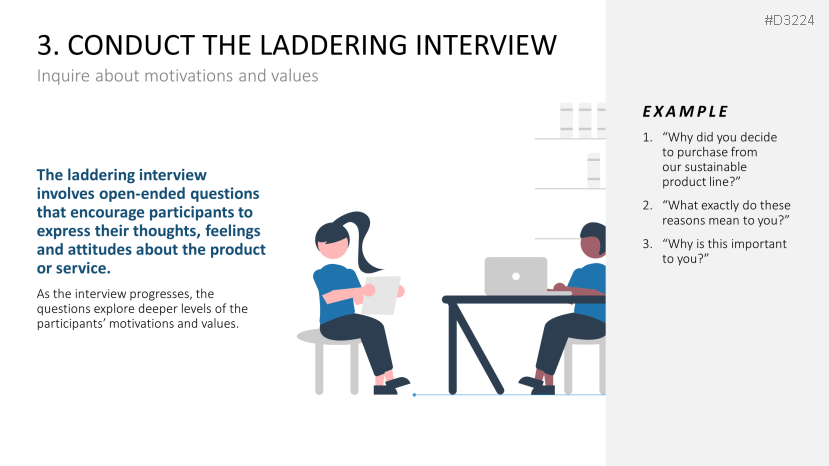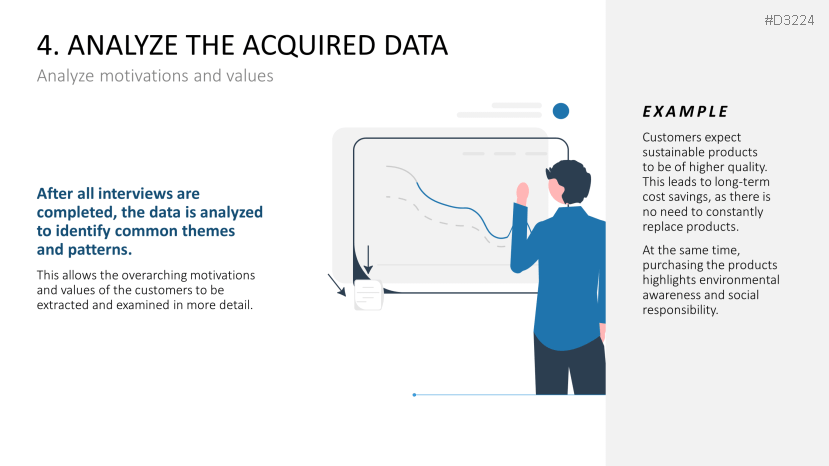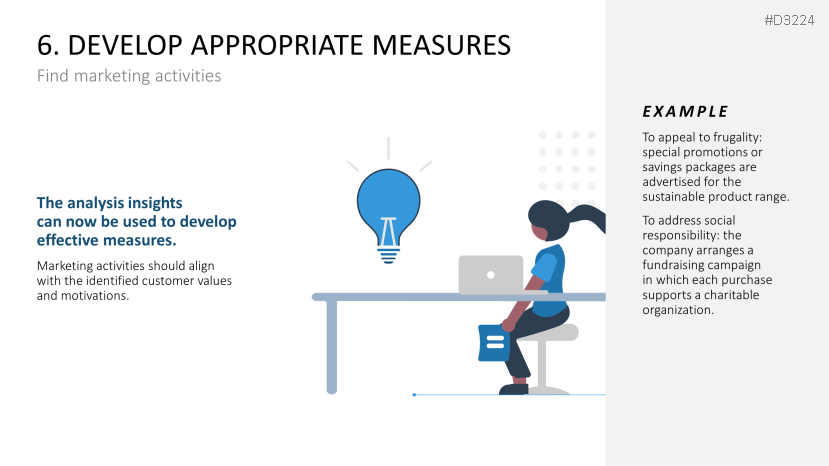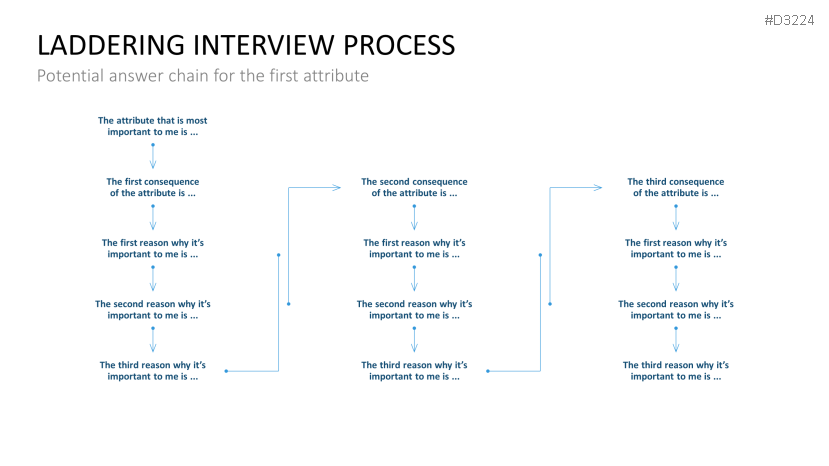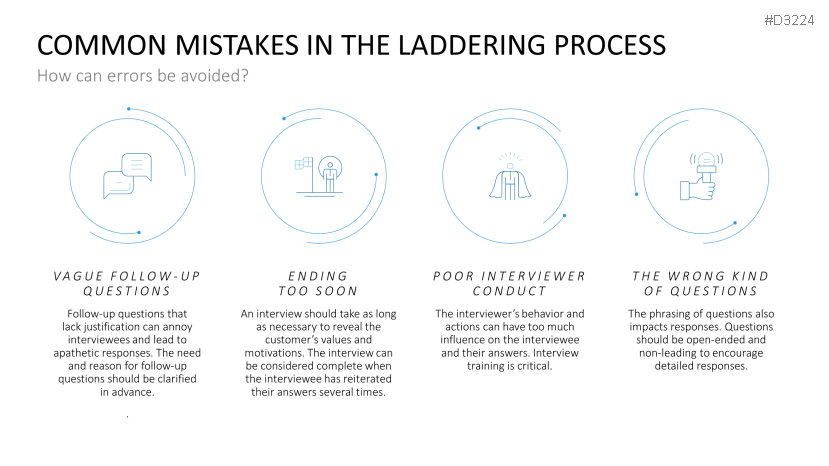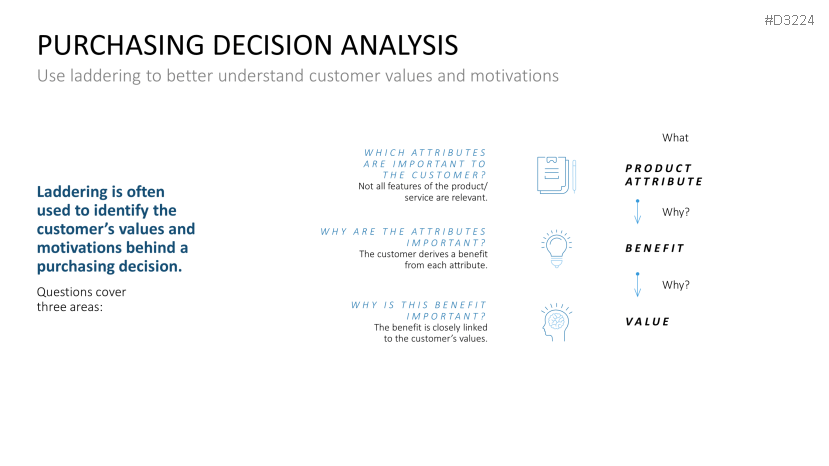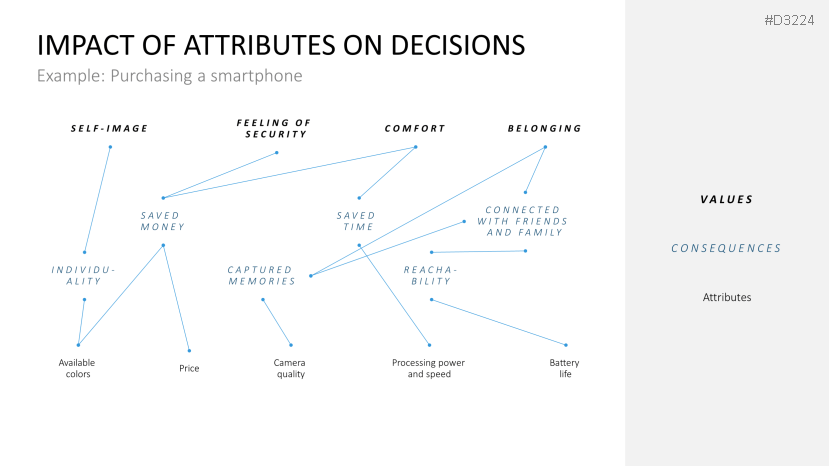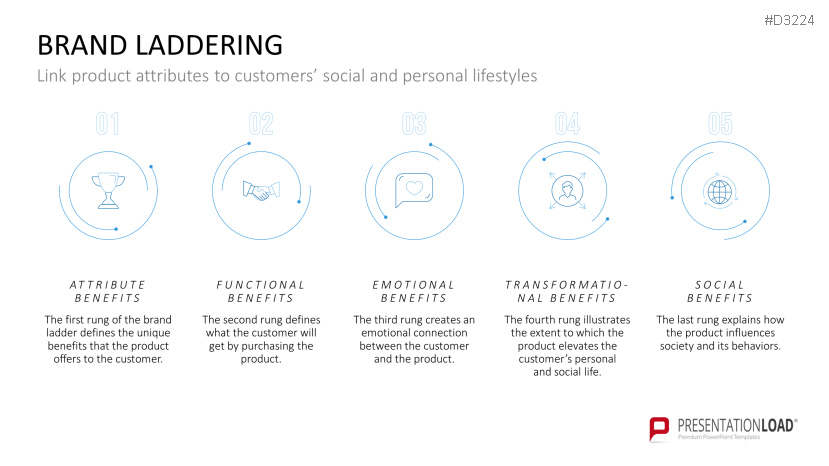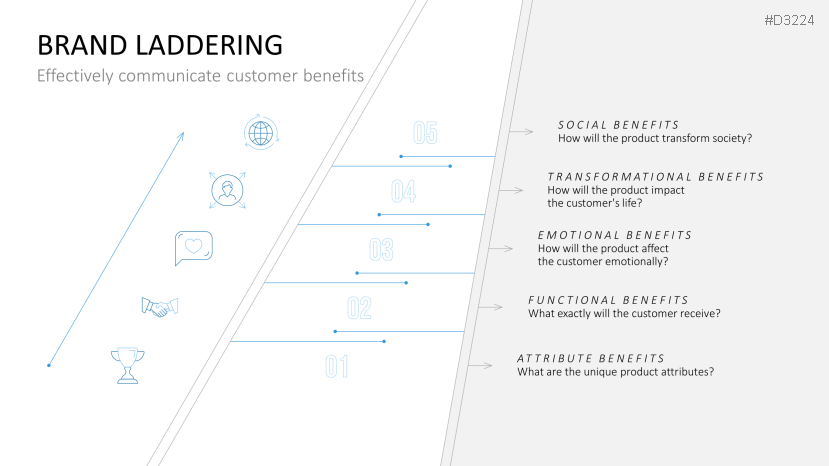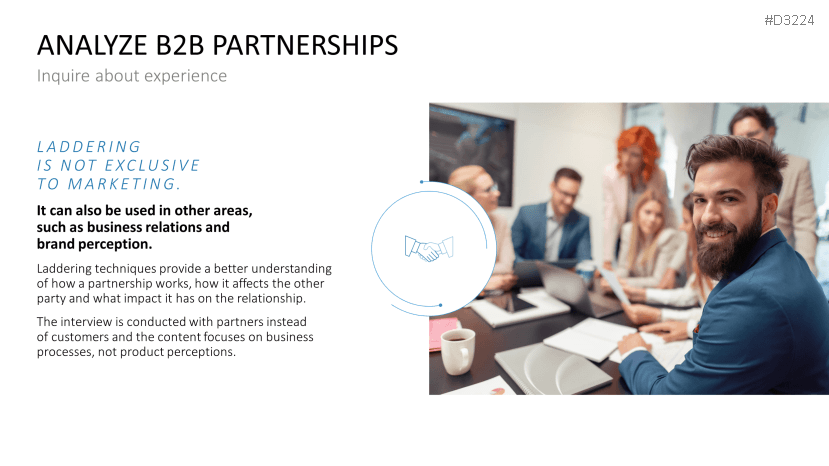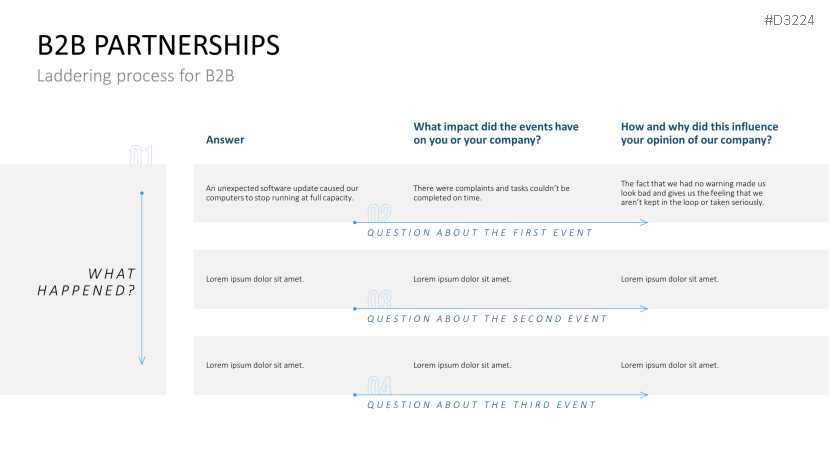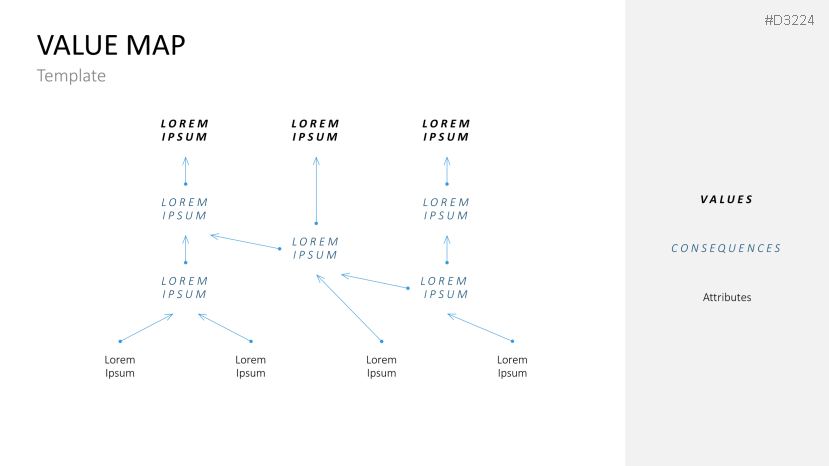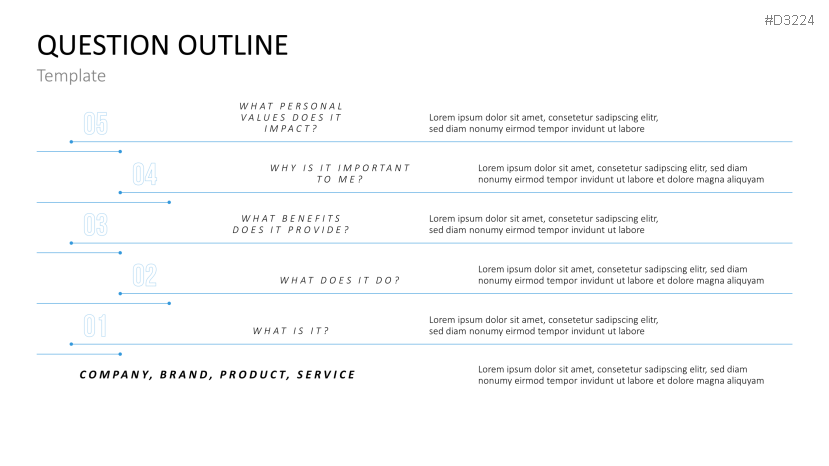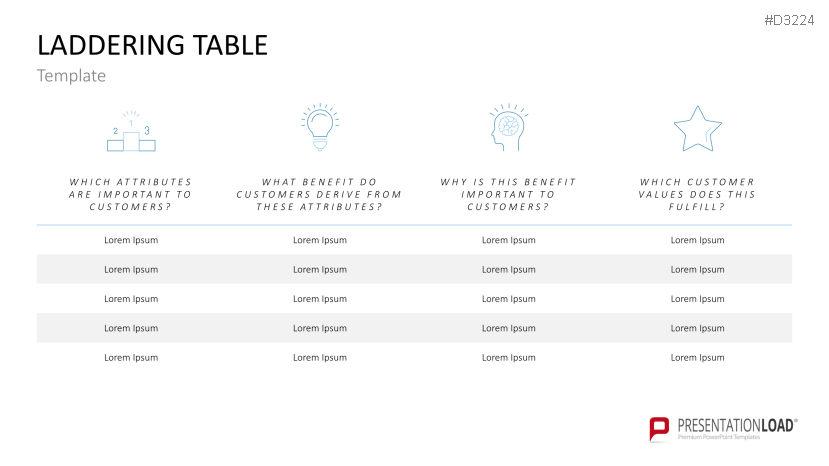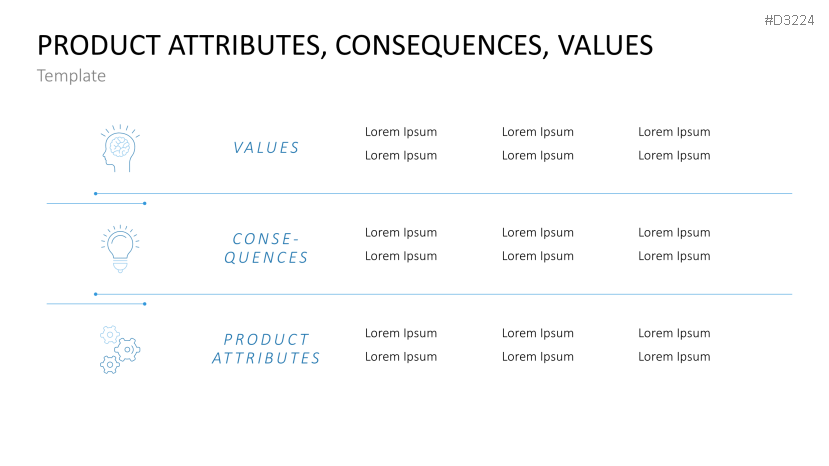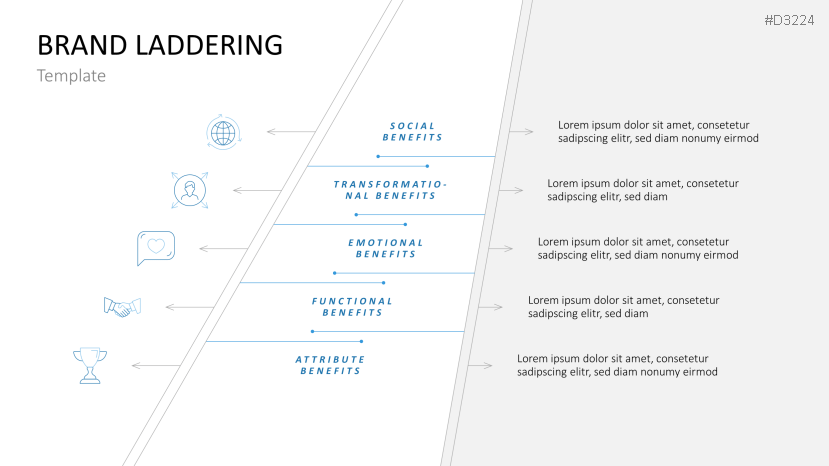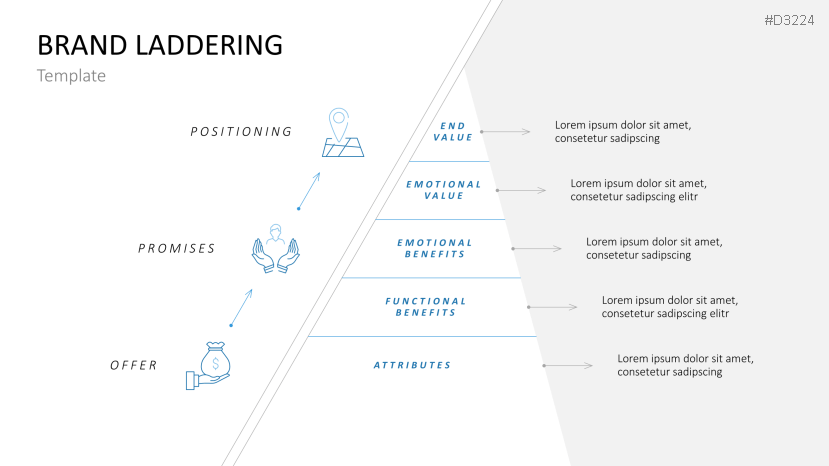
What is laddering?
Laddering is a qualitative market research method. It is used to uncover and better understand the connection between product attributes and the underlying needs and values of customers. This is facilitated through a customer survey with targeted, sequential questions that encourage customers to reveal their reasons behind their purchasing decision. The laddering method first asks about the most important attributes of the products or services. It then focuses on the consequences and benefits of those attributes and ultimately, identifies deeper customer values. These results can subsequently be used to develop value propositions and targeted marketing strategies.
Laddering and the means-end chain
Laddering is a way to visualize the means-end chain. The means-end chain looks at product and service attributes, benefits and psychological consequences to identify the customers’ emotional end goals. It moves from superficial aspects – the product’s tangible features and the tasks it performs – to more profound aspects – the emotional and social outcomes and personal benefits of using the product. Through this process, the means-end chain provides valuable information regarding purchasing decisions.
When can laddering be used?
Laddering is not just a market research tool. Companies can also use this method to develop their value proposition. This involves simulating a customer interview so the company can derive its own answers. Brand laddering works in a similar way. The objective is to collect valuable information about the brand so the company can develop the right brand communication. Lastly, it can also be used in a B2B context and as a problem-solving tool. Rather than asking about product attributes, questions are asked about the B2B partnership or a specific problem until enough insight has been generated.
Everything you need in one PowerPoint template
Our new PowerPoint template provides key information about the laddering method on professionally designed slides. Present the method to your marketing team and ensure it becomes an established tool in your company. With step-by-step instructions and selected templates, you will be able to conduct laddering interviews and compile and present their results with minimal effort.
With the Laddering template for PowerPoint, you can
- present the advantages of the laddering method.
- receive step-by-step instructions for the laddering process.
- use our templates to present your results professionally with minimal effort.
This PowerPoint template includes:
- Quote
- What is laddering?
- Customer needs and motivations
- The solution: laddering
- Laddering: definition
- Qualitative and quantitative research methods
- Means-end chain
- Three key aspects of laddering
- The laddering principle
- Pros and cons
- Limitations of laddering
- How does laddering work?
- When to use laddering
- Laddering process
- 1. Define the key research question
- 2. Find interviewees
- 3. Conduct the laddering interview
- 4. Analyze the acquired data
- 5. Create a response hierarchy
- 6. Develop appropriate measures
- Laddering interview process
- Common mistakes in the laddering process
- Potential applications
- Purchasing decision analysis
- Impact of attributes on decisions
- Develop your value proposition
- Brand laddering
- Analyze B2B partnerships
- Abstraction laddering
- Templates
- Value map
- Question outline
- Laddering table
- Product attributes, consequences, values
- Brand laddering templates

